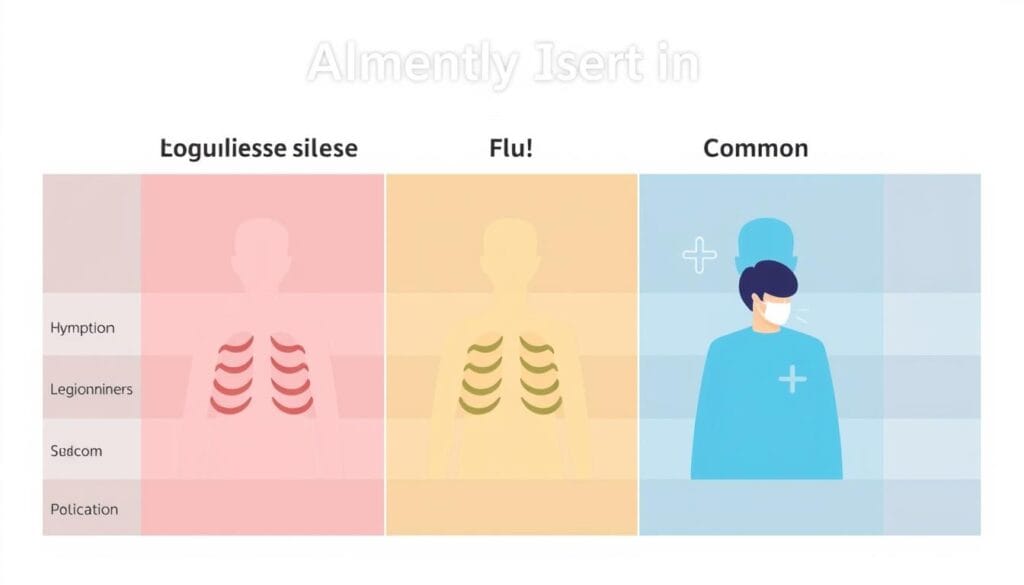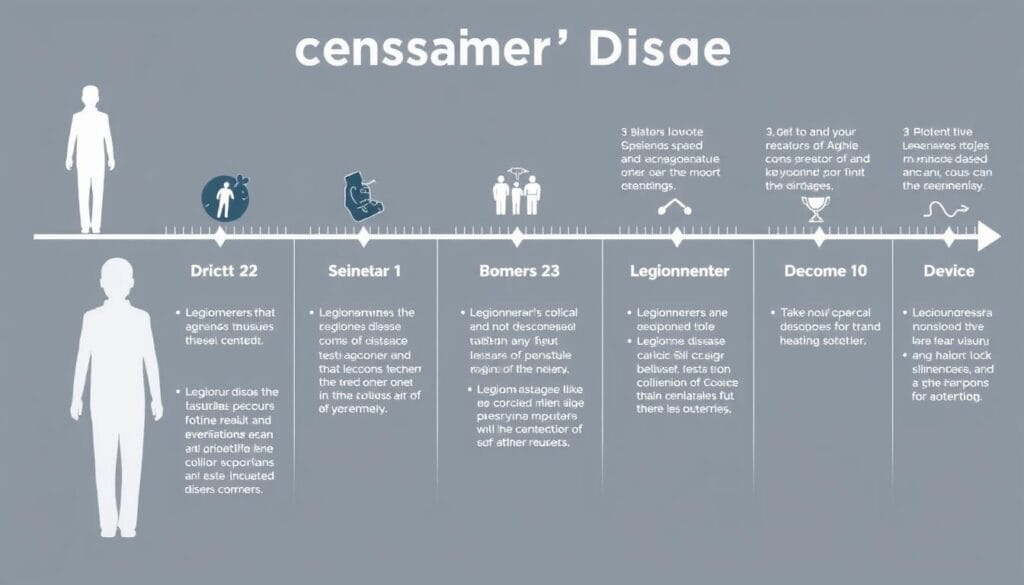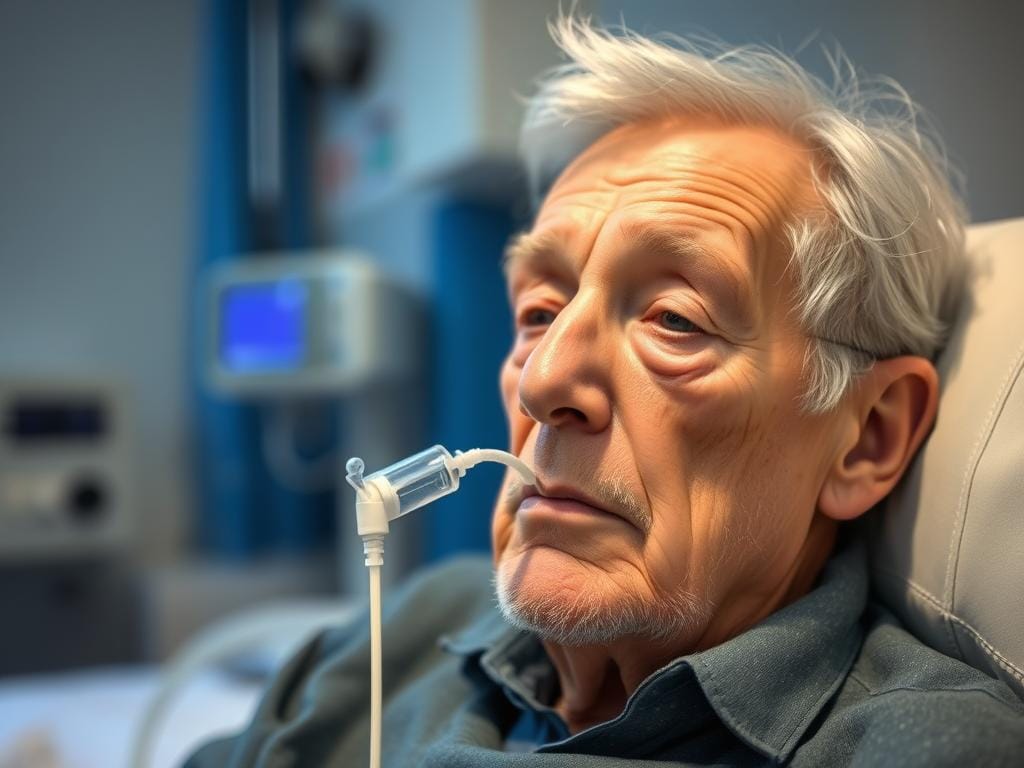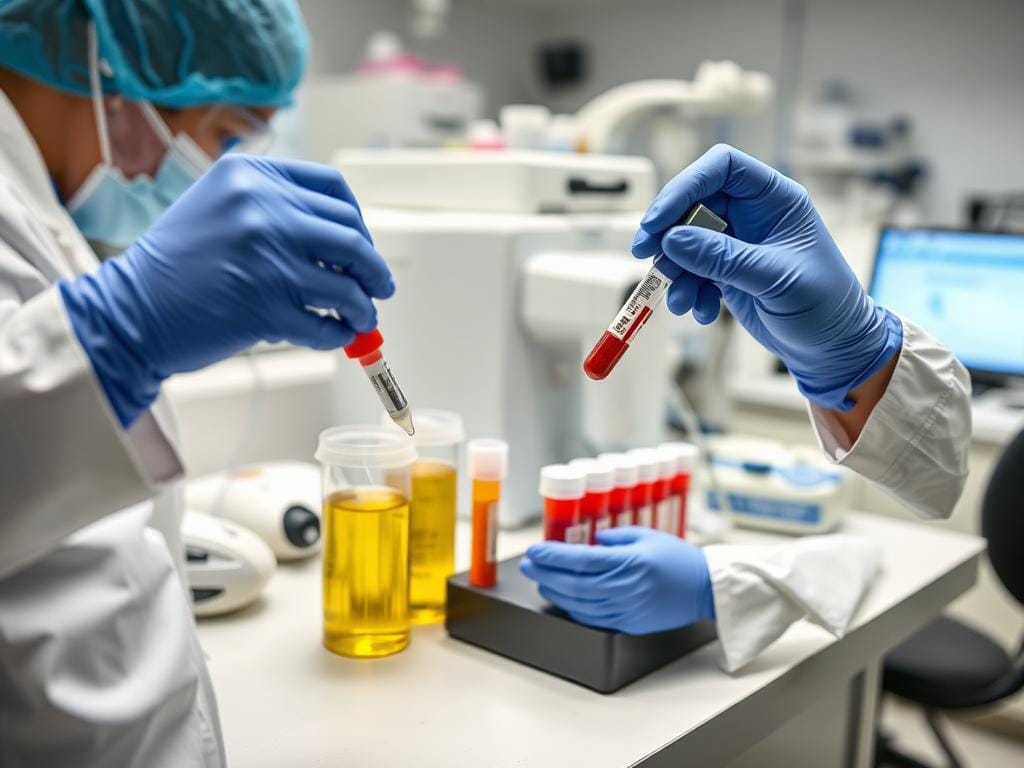What Is Legionnaires’ Disease?
Legionella pneumophila bacteria under microscope
Legionnaires’ disease is a serious type of pneumonia (lung infection) caused by breathing in small droplets of water containing Legionella bacteria. The bacteria typically grow in warm water systems like cooling towers, hot tubs, large plumbing systems, and air conditioning units in large buildings.
Most people exposed to Legionella bacteria don’t become ill. However, for susceptible individuals, especially those with weakened immune systems, the infection can quickly progress from mild symptoms to life-threatening complications.
10 Early Symptoms of Legionnaires’ Disease
Legionnaires’ disease typically develops 2-10 days after exposure to the bacteria. The early symptoms often resemble flu, which can make initial diagnosis challenging. Here are the key early warning signs to watch for:

Initial Symptoms (Days 1-2)
- High Fever: Often reaching 104°F (40°C) or higher, more severe than typical flu
- Headache: Persistent and often severe, not easily relieved by over-the-counter pain medications
- Muscle Aches: Generalized muscle pain throughout the body that can be intense
- Fatigue: Extreme tiredness and lack of energy beyond normal fatigue
- Loss of Appetite: Reduced interest in food, sometimes accompanied by nausea
Progressive Symptoms (Days 2-3)
- Dry Cough: Initially non-productive, may later produce mucus or even blood
- Shortness of Breath: Difficulty breathing, even during mild activity
- Chest Pain: Pain when breathing deeply or coughing
- Gastrointestinal Issues: Nausea, vomiting, and diarrhea (more common in Legionnaires’ than in typical pneumonia)
- Confusion or Mental Changes: Disorientation or changes in mental state, particularly in older adults
How Legionnaires’ Symptoms Differ from Common Illnesses

| Symptom | Legionnaires’ Disease | Seasonal Flu | Common Cold |
| Fever | Very high (often >104°F) | High (100-102°F) | Rare or mild |
| Cough | Initially dry, may progress to bloody | Dry, can be severe | Mild to moderate, usually productive |
| Shortness of breath | Common and often severe | Sometimes | Rare |
| Gastrointestinal symptoms | Common (diarrhea, vomiting) | Sometimes | Rare |
| Confusion | Common, especially in older adults | Rare | Very rare |
Unlike the common cold or seasonal flu, Legionnaires’ disease typically involves a combination of respiratory, gastrointestinal, and neurological symptoms. The presence of confusion, severe shortness of breath, and diarrhea alongside high fever and cough should raise suspicion for Legionnaires’ disease rather than typical respiratory infections.
Timeline of Symptom Progression

Days 1-2
Initial flu-like symptoms begin: fever, headache, muscle aches, and fatigue. These symptoms often come on suddenly and can be severe from the start.
Days 2-4
Respiratory symptoms develop: dry cough, shortness of breath, and chest pain. Gastrointestinal symptoms like diarrhea and nausea may appear.
Days 4-6
Without treatment, symptoms worsen: high fever persists, breathing difficulties increase, confusion may develop, and cough may produce bloody mucus.
Important: Untreated Legionnaires’ disease typically worsens during the first week and can lead to severe complications including respiratory failure, septic shock, and acute kidney failure. Early diagnosis and treatment are crucial.
Key Risk Factors for Legionnaires’ Disease

Not everyone exposed to Legionella bacteria will develop Legionnaires’ disease. The following factors significantly increase your risk:
Personal Risk Factors
- Age over 50 years
- Current or former smoking
- Chronic lung disease (like COPD or emphysema)
- Weakened immune system due to medications or conditions
- Chronic health conditions like diabetes, kidney disease, or cancer
Environmental Risk Factors
- Recent stay in a hospital
- Residence in a long-term care facility
- Recent travel with stays in hotels
- Exposure to hot tubs or decorative water features
- Recent plumbing repairs in your home or workplace
If you have multiple risk factors and are experiencing symptoms, medical attention is especially important. Mention your risk factors and any recent exposures to your healthcare provider.
When to Seek Medical Attention

Seek immediate medical attention if you experience:
- High fever (104°F/40°C or higher) with cough and shortness of breath
- Difficulty breathing or chest pain with breathing
- Confusion or changes in mental awareness
- Symptoms that worsen despite over-the-counter medications
- Any symptoms after potential exposure to Legionella bacteria
“Make a medical appointment if you think you’ve been around legionella bacteria. Diagnosing and treating Legionnaires’ disease as soon as possible can help shorten the time it takes to recover and prevent serious complications.”
Diagnosis and Treatment

If Legionnaires’ disease is suspected, your doctor will likely order:
- Urine tests to detect Legionella antigens
- Blood tests to check for antibodies against the bacteria
- Sputum tests to identify the bacteria in mucus
- Chest X-ray or CT scan to examine your lungs
Treatment typically involves:
- Antibiotics specifically effective against Legionella bacteria
- Hospitalization for severe cases
- Oxygen therapy if breathing is compromised
- Supportive care to manage fever and other symptoms
With prompt diagnosis and appropriate treatment, most people recover fully from Legionnaires’ disease, though recovery may take several weeks.
Prevention of Legionnaires’ Disease

While individuals can’t completely eliminate risk, these measures can help reduce exposure to Legionella bacteria:
- Ensure proper maintenance of hot tubs, spas, and home humidifiers
- Clean shower heads and faucets regularly, especially if unused for periods
- Avoid smoking, which increases susceptibility to respiratory infections
- Be cautious when using potting soil, especially if you’re in a high-risk group
- If you’re at high risk, consider avoiding hot tubs in public facilities
Building managers and property owners have the primary responsibility for preventing Legionnaires’ disease outbreaks through proper water system maintenance and disinfection.
Conclusion

Recognizing the early symptoms of Legionnaires’ disease is crucial for timely diagnosis and treatment. While the initial symptoms may resemble flu, the combination of high fever, dry cough, shortness of breath, gastrointestinal issues, and confusion should prompt medical attention, especially in high-risk individuals.
With proper diagnosis and treatment, most people recover from Legionnaires’ disease. However, the condition can be life-threatening if left untreated, particularly for vulnerable populations. If you suspect exposure to Legionella bacteria and are experiencing symptoms, don’t hesitate to seek medical care.
Experiencing These Symptoms?
If you’re experiencing several of these symptoms, especially after staying in a hotel, hospital, or large building, don’t wait. Early treatment is critical for preventing complications.
High-Risk Individual?
If you’re over 50, have a chronic health condition, or a weakened immune system, you should be especially vigilant about Legionnaires’ disease symptoms. Early medical consultation can be life-saving.

